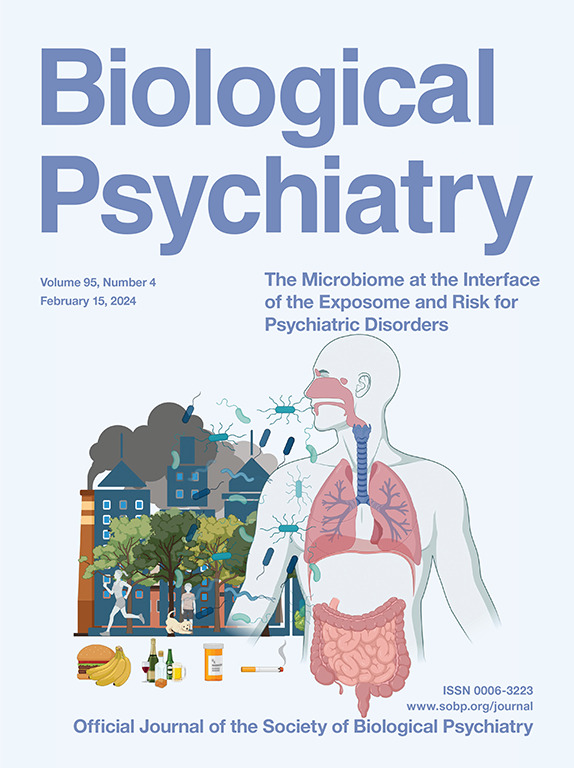减轻与性别相关的偏见以阐明自闭症表型
IF 9.6
1区 医学
Q1 NEUROSCIENCES
引用次数: 0
摘要
自闭症谱系障碍(ASD)通常被认为是男性主导的疾病,流行病学估计发现,被诊断为自闭症的男性比例约为3-4比1。绝大多数用于建立这一性别比例的研究都是根据首次符合临床标准的参与者进行的,这可能会模糊男性和女性之间的定性差异,并忽略了不符合男性偏见标准的女性。我们最近发表的数据,使用了一个前瞻性确定的自闭症高家族可能性儿童样本,纠正了基于性别的测量偏差,并使用了数据驱动的行为随时间的分组,非常适合解决这个问题,并表明自闭症相关问题的男女比例接近1:1。在这篇综述中,我们提出需要研究自闭症表型的特征,或自闭症相关性状中潜在遗传变异的行为表达。我们描述了样本确定、方法严谨性和特征范围的变化,这些变化可能有助于阐明自闭症表型。一个专注于描述临床疾病的遗传相关生物学决定因素的研究项目有可能揭示ASD潜在遗传责任的完整表达,并改善女性ASD相关问题的早期识别。本文章由计算机程序翻译,如有差异,请以英文原文为准。
Mitigating sex-related biases to elucidate the autism phenotype
Autism spectrum disorder (ASD) is commonly considered a male-dominant condition, with epidemiological estimates finding that approximately 3-4 males are diagnosed for every female. An overwhelming majority of studies used to establish this sex ratio were conducted with participants ascertained based on having first met clinical criteria, which may obscure qualitative differences between males and females, and omits females who do not meet male-biased criteria. Our recently published data, which used a prospectively-identified sample of children at high-familial likelihood for ASD, corrected for sex-based measurement bias, and used data-driven groupings of behavior over time, were well-suited to address this issue and suggest the male-to-female ratio of autism-related concerns is closer to 1:1. In this review, we propose that research is needed that characterizes the autism phenotype, or behavioral expression of underlying genetic variation in autism-relevant traits. We describe shifts in sample ascertainment, methodological rigor, and scope of traits examined that may help elucidate the autism phenotype. A research program focusing on delineating the genetically-related, biological determinants of clinical disorders has the potential to reveal the full expression of underlying genetic liability for ASD and improve early identification of ASD-related concerns in females.
求助全文
通过发布文献求助,成功后即可免费获取论文全文。
去求助
来源期刊

Biological Psychiatry
医学-精神病学
CiteScore
18.80
自引率
2.80%
发文量
1398
审稿时长
33 days
期刊介绍:
Biological Psychiatry is an official journal of the Society of Biological Psychiatry and was established in 1969. It is the first journal in the Biological Psychiatry family, which also includes Biological Psychiatry: Cognitive Neuroscience and Neuroimaging and Biological Psychiatry: Global Open Science. The Society's main goal is to promote excellence in scientific research and education in the fields related to the nature, causes, mechanisms, and treatments of disorders pertaining to thought, emotion, and behavior. To fulfill this mission, Biological Psychiatry publishes peer-reviewed, rapid-publication articles that present new findings from original basic, translational, and clinical mechanistic research, ultimately advancing our understanding of psychiatric disorders and their treatment. The journal also encourages the submission of reviews and commentaries on current research and topics of interest.
 求助内容:
求助内容: 应助结果提醒方式:
应助结果提醒方式:


